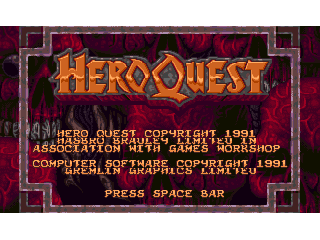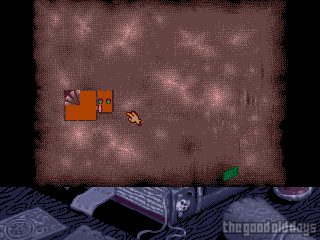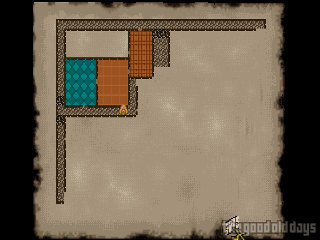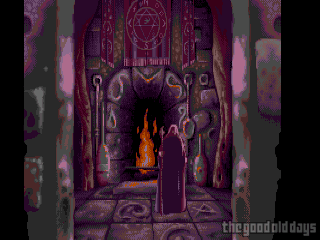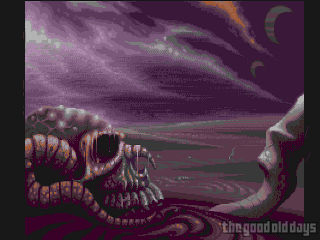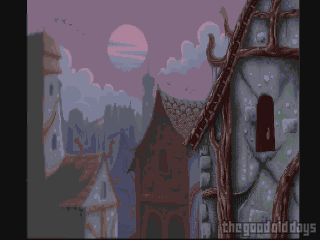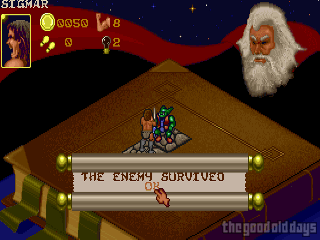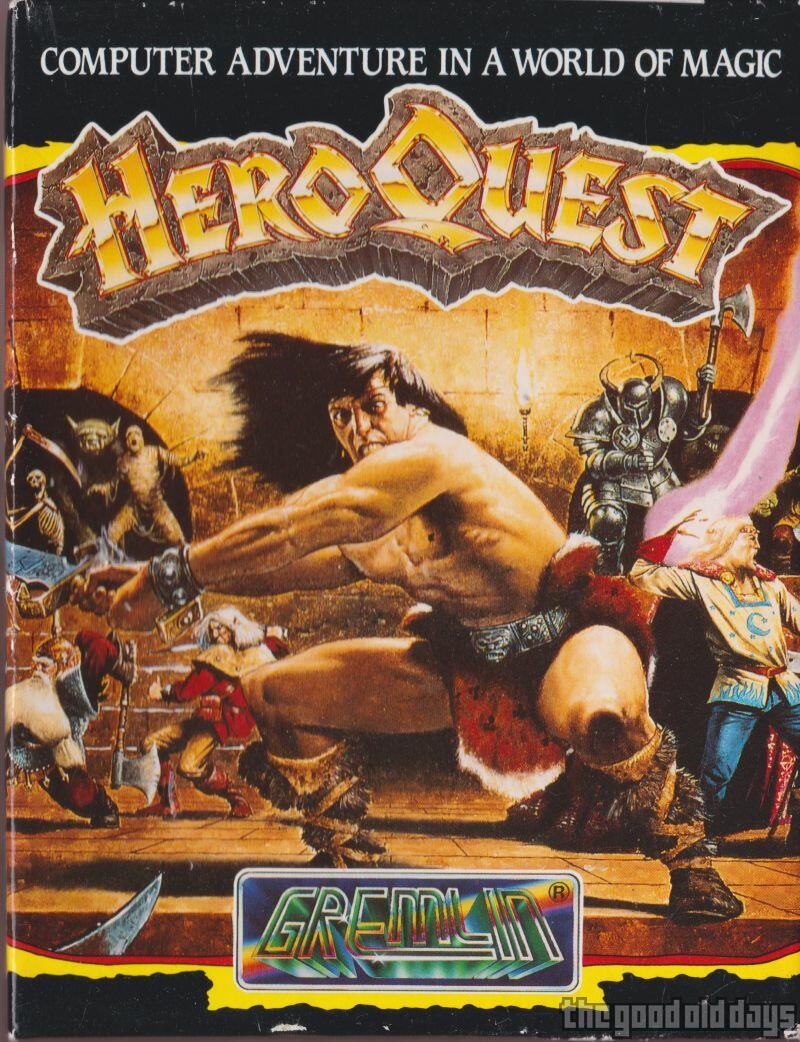Thoughts by NetDanzr (30 May 2006) – PC (DOS)

HeroQuest came into being as the McDonald’s version of Dungeons and Dragons. Fast, flashy and without taste, was the motto. Well, not exactly; there was some taste, and it was up to the dungeon master to create it. The original version of HeroQuest involves a big cardboard playing field, lots of plastic monsters, four heroes and 14 levels of fun (later extensions of the game, which was immensely popular in Germany where I’ve gotten it, added the level total to about 25). The game became incredibly popular. You didn’t need to remember all those complicated stats, which dice to throw and how many times to throw them. Instead, everything was laid out for you, including the walls, which you could erect on the board. It comes as little surprise that the board game created a few spin-offs. The only successful one, however, was Space Hulk, which spawned the game of the same name by the same company – Gremlin.
But let’s stay with HeroQuest and move to the computer version. There’s been lots of them, some pretty bad (like the Commodore version, which still holds the title The Most Misspelled Game of All Ages). Other were much better (especially the Amiga one, as usually). The PC game featured the same kind of board and your four heroes – a Barbarian, Elf, Dwarf and a Wizard. Each character could be controlled by one player, so the game allowed you to invite your friends to join you. Once the characters were selected and equipped, you were sent to the playing board on a specific quest. Each character started in one corner, and your task was to get the quest done and hoard as much treasure as possible before the other players snatched it.
The game itself had a very simple mechanics. It was turn-based, and in each turn, your character could perform two things: move and do some action. The movement was determined by a dice roll; the character had to move the given number of points. Before or after moving, the character could perform and action, ranging from engaging into combat, through searching for traps, disarming them, opening chests to searching for treasure. After you finished the quest, you were automatically transported to the main menu again. Here, you could exchange the treasure for better equipment, potions and spells.
The game itself was very entertaining. Imagine a turn-based Diablo, with a much better dungeon structure and quite tough nasties (anybody remembers Chaos Warriors?). The fact that you’ve had quite limited options in moving and performing actions, added some strategy into the game. Instead of busting into an unknown room, you had to sneak to the door and wait for the next turn. But the real fun began in the multiplayer mode. Not only did you have to fight the monsters, you had to beat your teammates to the treasure and possibly finishing the quest. While in some cases cooperation was fine (you will always welcome two or three more friendlies if you accidentally step in the middle of a Chaos Warrior convention), nothing prevented you from killing your teammates to get to their gold. Of course, this worked both ways, and especially on the later levels where everybody was pretty worked out, you spent most of your time trying to evade each other.
However, the game was not flawless. There were quite a few problems, which, while not making the game impossible, increased its frustration factor. Probably the biggest problem was searching for treasure. Each hit point (called “body point” in this game) counted, and healing potions became more important than anything else. This changed a typical level that lasted 20 to 50 turns to something three times as long. In addition, the story was quite choppy, and sometimes understanding the reasons behind the quests was quite a task. Lastly, there was a bug that made cheating quite easy in some instances: the board was divided into numerous sectors to fit the screen. If you stood at the edge of a sector and a monster was standing next to you in the next sector, you could hack away at that monster, but you would never be attacked.
Still, HeroQuest is well worth playing, as one of the very few true turn-based RPG games out there.
Archived Thoughts
Thoughts by Mr Creosote (14 Mar 2001) – Amiga (OCS)

Ah, Hero Quest… We all spent countless hours playing the board game! I still remember the christmas in Hotel Dorint in Hameln when my brother got it. We spent half of our time there playing it. Of course we were genious enough to use the blank map to create our own quest with a permanent and water resistant pen. And the rest of the time we played…. ummmmm…… hockey in the corridor! But back to Hero Quest.
It’s a very simplistic RPG. Simplistic because it’s not pen&paper based, but it takes place on a board. On this board plastic figures move around. Each ‘hero’ is controlled by a player and all the monsters by the master. This master also handles the events like traps or the outcome of treasure hunting. And he has the most workload because he has to put all the pieces of furniture on the board ;)
This (mostly) boring position is taken over by the computer here of course. Up to four human players can participate because there are four character classes which can only be used once at the same time. Each character has a special ability. The barbarian is good at fighting, the dwarf can disarm traps, the elf is an allrounder who can fight but also cast some spells and the wizard is a wimp full of magic.
Together (or on their own) they have to fulfill a number of quests to drive an evil sorcerer off the country eventually. But especially the first tasks hardly have any real link to this. But who cares about such a stereotype story anyway?
With the gold you find and get as rewards for completed quests, you can buy new equipment for your character. But there is only very few stuff available. Limited as the variety of spells. And the variety of monsters. And the variety of missions. And the variety of the choices the players have.
The expansion disk (which can also be used as a stand-alone game) adds new missions and nothing else. And these missions are aimed at developed characters – so don’t start with them but play the ‘regular’ campaign first! Otherwise you’ll find yourself kill in the very first room…
On the whole, Hero Quest is a nice and simple game. It may not be suited for RPG-freaks. But beginners and fans of the board game will like it because it imitates the original version almost perfectly! And the multiplayer option is especially well done because the characters don’t have to play all the missions together, but can go their own ways partly.
Thanks to dlfrsilver for the manual and OddbOd for figuring out the copy protection codes!
